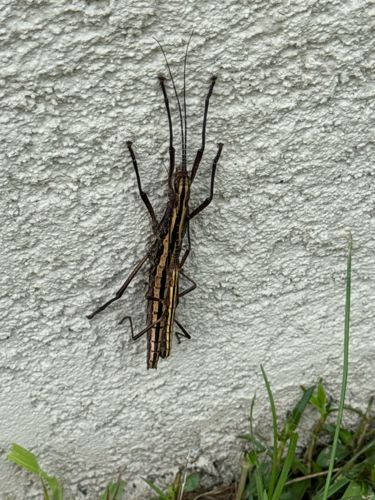Striped Walkingstick, Two-striped Walking Stick
Scientific Name: Anisomorpha buprestoides
Order & Family: Phasmatodea, Pseudophasmatidae
Size: Males typically 4-6 cm (1.6-2.4 inches) and females up to 7-10 cm (2.8-3.9 inches) in length.

Natural Habitat
Typically found in wooded areas, forests, gardens, and areas with dense vegetation where their host plants are abundant. They prefer humid environments.
Diet & Feeding
Herbivorous, feeding on the leaves of various plants, including oak, rose, and citrus. They are known to prefer broadleaf trees and shrubs.
Behavior Patterns
Striped walking sticks are generally nocturnal, feeding at night and remaining still during the day to avoid predators. They are masters of camouflage, blending in with bark and branches. When threatened, they may remain motionless or drop to the ground. Females lay eggs by dropping them to the ground, often resembling seeds.
Risks & Benefits
Generally harmless to humans. Their main ecological role is as herbivores, consuming plant matter. In large numbers, they can defoliate plants, but significant damage to cultivated crops is rare. They are an important food source for birds, reptiles, and other insectivores.
Identified on: 8/23/2025